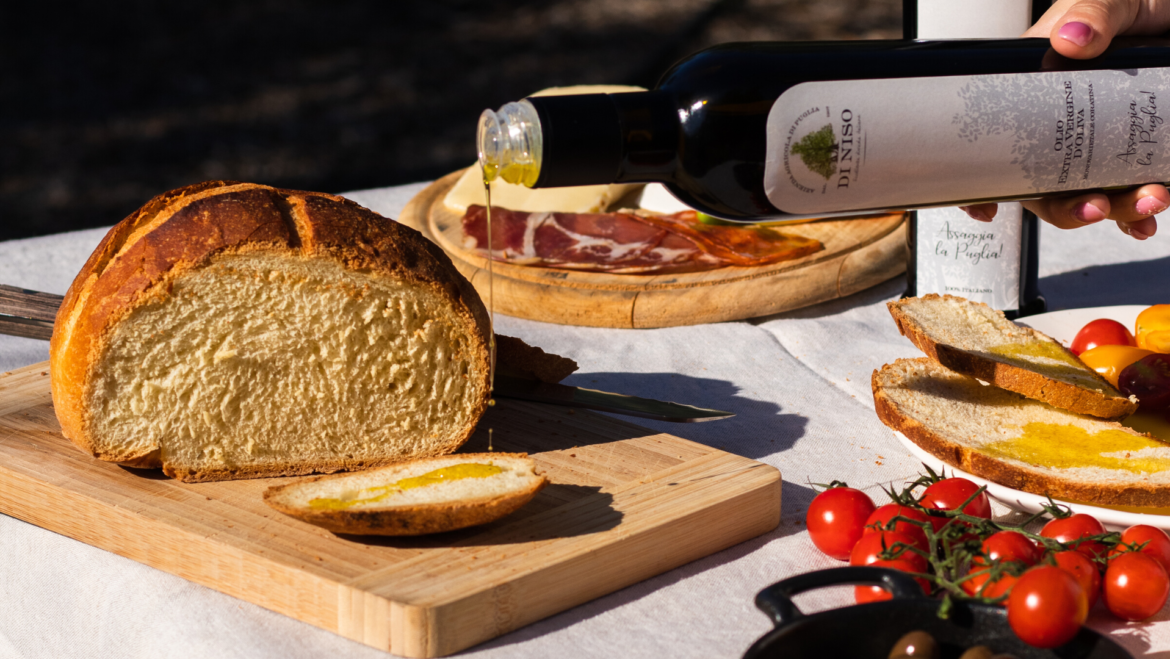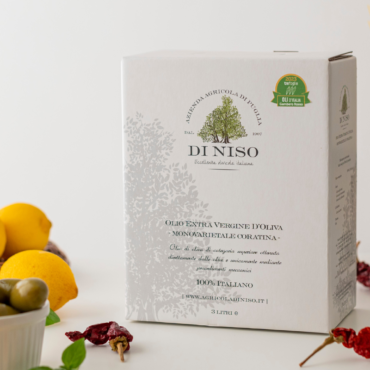How to use Coratina extra virgin olive oil in the kitchen
Coratina extra virgin olive oil, intense and bold, is the best fat to use in the kitchen: a concentration of vitamins and one of the most powerful antioxidants in nature. It has a yellow color with golden reflections, tending towards green. The aroma is highly aromatic and fruity, with hints of artichoke and grass. It has a slight spicy taste and a bitter aftertaste.
During cooking, extra virgin olive oil remains chemically stable, which is why it should be preferred over other fats. When using extra virgin olive oil, it’s important to consider that a one-liter bottle of quality extra virgin olive oil corresponds to a concentrate of 7 kg of olives.
The best way to benefit from the polyphenols of Coratina extra virgin olive oil is to use it raw on dishes like cooked or raw vegetables. Its intense flavor also pairs well with medium and large structured dishes such as hearty pasta dishes, soups and legume stews, red meats, grilled fish, and of course, in its pure form, on bruschetta.
Other recommended pairings with Coratina extra virgin olive oil include tuna carpaccio, swordfish salads, gratinated tomatoes, grilled radicchio, pasta dishes with sausage, boiled octopus, and aged hard cheeses.
The polyphenols in Coratina extra virgin olive oil tend to degrade at high temperatures, but recent studies have shown that even after cooking, extra virgin olive oil maintains its antioxidant properties. Therefore, it’s important to choose a high-quality extra virgin olive oil with a high phenolic content for cooking as well, ensuring that it continues to provide antioxidant benefits and remains the primary source of good fats in your diet.
The origin of Coratina is still mysterious, but its organoleptic and biological profile, its adaptability, strength, and history make it a captivating protagonist in the kitchen and on the table, waiting to be discovered.
Visit our shop and purchase our practical and useful bag-in-box containers for your kitchen.





